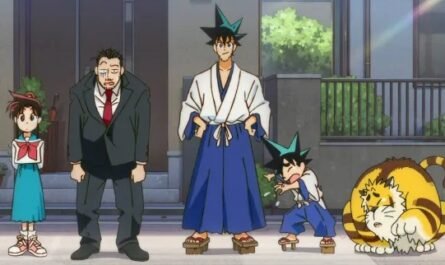Japanese anime is gaining more and more fans worldwide because watching it quickly through online distribution has become possible. For this reason, it has become a massive business in a short time and is now approaching a 3 trillion yen industry, but it is said that the production site has a chronic shortage of workers, and it takes time to train. What should be done now so that Japanese animation stays caught up?
Sato: What happens in the Tokyo Detention House sticks with me the most about the anime. I could not subscribe to newspapers or magazines and only listen to radio news. Is. Sudo, Can we watch movies in the detention center? Sato: You can’t usually see it. So when I asked the guard, he quietly said, “Only those who have been confirmed.” Sudo: Confirmed person? Sato: A detention house is where unsentenced prisoners on trial enter, but there is one exception. It’s death row.
This is because the sentence has not yet been executed. A few days later, a death row inmate was next to me. Sato Yes. The movie is seen on video several times monthly as a privilege for death row prisoners. And I later found out that the person next to me was Hiroshi Sakaguchi, a death row prisoner who killed 16 people in the Allied Red Army Incident. Sudo: Huh, he was watching “Spirited Away.” Sato: When I learned about it, I was deeply moved by the fact that anime is also being used to provide peace of mind for death row inmates. Sudo: That’s a story you won’t hear anywhere else. Sato: I was living overseas, so I couldn’t keep up with anime from that era, but since Amazon Prime and Netflix started streaming, I’ve been watching a lot on my iPad.
“Japan Sinks 2020” and “The Drifting Housing Complex Telling Rain” was recently enjoyable. Sudo: Both anime are exclusively distributed by Netflix. Sato: Neither of us would want something like this to happen, but I think it’s a work that reflects an uncertain future with a setting that arouses interest in what would happen if it did. Sudo: I was a little surprised that Mr. Sato saw them. Both works are minor compared to “Spirited Away” and the big hit “Kimetsu no Yaiba.” Sato: The fact that it was streamed, not in theaters or on TV, was a significant factor. Did distribution change the world of anime? Several soils. It has changed a lot. In particular, the fact that it can be quickly delivered to the general public worldwide is significant. Distribution has turned Japanese animation into a vast business.
The domestic market and the overseas market are now competing with each other. Sato: According to the materials, the market size 2021 will be 2,742.2 billion yen. Sudo: Since the middle of the 2010s, the Japanese animation market has been said to be worth 2 trillion yen, but now it is more appropriate to call it a 3 trillion yen industry.
The overseas market is driving this, with domestic sales of 1,428.8 billion yen and overseas sales of 1,313.4 billion yen. Sato: The publishing market is about 1.6 trillion yen, so that it will overtake it both in Japan and overseas. Sudo Some people say that Japanese animation was popular and major more than 40 years ago, but the market has become more extensive than it used to be. Sato: Behind that is the video distribution site. Sudo: That’s right. Therefore, companies are also active, and in 2021, the Sony Group acquired Crunchyroll, the largest Japanese anime distribution platform in the United States, for 130 billion yen.
The following year, we integrated the same American animation company “Funimation” and French “KAZE.” Originally, Sony had a successful company called Aniplex USA in the United States. Still, with the merger of these companies, it became a comprehensive animation company that handles distribution, movie distribution, license management, game development, events, etc. It was born and has become an oligopoly. Sato: The digital field is inherently prone to oligopoly. Are there any other companies expanding overseas? In 2018, Bandai Namco, making a large profit with plastic models of “Mobile Suit Gundam,” acquired “Bluefin,” an American toy distribution company. Sato: It is booming, including derivative products. Sudo: In the past, there was a kind of discrimination against Japanese anime, and major overseas broadcasting stations didn’t air it much, and cable A small part was also shown on TV. But distribution companies such as Netflix are IT companies, so I started arranging titles that seemed major. Then I realized that Japanese anime is more popular than we thought. When I put some effort into it, everyone caught on, and it spread all over the world.











